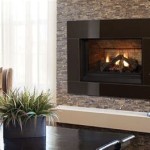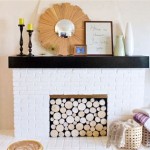Understanding Wood Fireplace Kits: A Comprehensive Guide
Wood fireplace kits have become increasingly popular for homeowners seeking to add the charm and warmth of a traditional fireplace without the complexities and costs associated with a fully custom-built masonry fireplace. These kits offer a pre-engineered, often modular system that simplifies the installation process, making a wood-burning fireplace more accessible for renovation projects and new construction alike. This article explores the components, benefits, considerations, and installation aspects of wood fireplace kits.
Components of a Wood Fireplace Kit
A typical wood fireplace kit comprises several essential components designed to work together seamlessly. The primary elements include the firebox, chimney system, and decorative facing. Understanding each part is crucial for selecting the right kit and ensuring safe and efficient operation.
The firebox is the central component where the fire is contained. It is typically constructed from heavy-gauge steel or cast iron, designed to withstand high temperatures and provide efficient heat radiation. The firebox may feature refractory lining, composed of firebrick or a similar heat-resistant material, to protect the steel from direct flame exposure and enhance heat retention. Some fireboxes include air wash systems that draw air over the glass door, keeping it cleaner for improved visibility of the fire.
The chimney system is vital for safely venting combustion byproducts, such as smoke and carbon monoxide, outside the home. Wood fireplace kits generally utilize prefabricated metal chimneys, often constructed from double-wall or triple-wall stainless steel. These chimneys are designed for high-temperature applications and are tested to meet stringent safety standards. The chimney system includes various components like chimney sections, elbows, tees, supports, and a termination cap. The specific components required depend on the fireplace location, roof pitch, and local building codes. Proper sizing and installation of the chimney are essential for optimal draft and to prevent dangerous backdrafting.
Decorative facing, also known as surround or facade, provides the aesthetic appeal of the fireplace. It typically consists of materials like brick, stone, tile, or manufactured stone veneer. The facing is installed around the firebox opening to conceal the underlying structure and create a finished look that complements the home's interior design. Many kits offer a range of facing options, styles, and materials, allowing homeowners to customize the fireplace to their preferences. The facing also contributes to heat dissipation and can be part of the overall fire safety design.
Benefits of Choosing a Wood Fireplace Kit
Opting for a wood fireplace kit presents several advantages over traditional masonry fireplaces. These benefits range from cost savings and ease of installation to improved safety and performance.
One significant benefit is the cost-effectiveness of wood fireplace kits. The pre-engineered design and modular construction typically result in lower material and labor costs compared to building a custom masonry fireplace from scratch. The streamlined installation process reduces the time and effort required, further contributing to cost savings. Furthermore, manufacturers often offer package deals that bundle the firebox, chimney system, and decorative facing, providing greater value compared to purchasing each component separately.
Simplified installation is another key advantage. Wood fireplace kits are designed for easier assembly and installation, especially compared to complex masonry projects. The pre-engineered components fit together with relative ease, and manufacturers provide detailed instructions and diagrams to guide the process. While professional installation is often recommended, some homeowners with adequate DIY skills can complete the installation themselves, potentially saving on labor costs. The modular nature of the kits also allows for greater flexibility in terms of placement and integration into existing structures.
Enhanced safety and performance are also noteworthy benefits. Wood fireplace kits are rigorously tested to meet safety standards, ensuring compliance with building codes and regulations. The prefabricated chimney systems are designed for optimal drafting, reducing the risk of smoke spillage and carbon monoxide exposure. The fireboxes are constructed from durable materials and often feature safety features such as spark screens and door latches to prevent embers from escaping. Moreover, many modern kits incorporate advanced combustion technologies that improve efficiency, reduce emissions, and provide cleaner burning.
Important Considerations When Selecting a Wood Fireplace Kit
Choosing the right wood fireplace kit requires careful consideration of several factors, including size, heating capacity, venting requirements, and aesthetic preferences. Failing to adequately assess these factors can lead to performance issues, safety hazards, or dissatisfaction with the final result.
Size and heating capacity are crucial considerations. The size of the firebox should be appropriate for the room or area it is intended to heat. A firebox that is too small may not provide sufficient warmth, while one that is too large can overheat the space and waste fuel. Heating capacity is typically measured in British Thermal Units (BTUs) per hour. It is important to match the BTU output of the fireplace to the heating requirements of the space. Factors like ceiling height, insulation levels, and climate conditions should be taken into account when determining the appropriate heating capacity. Manufacturers typically provide guidelines on the square footage that a particular fireplace model can effectively heat.
Venting requirements are also essential. The chimney system must be properly sized and installed to ensure adequate draft and prevent smoke spillage. The height and diameter of the chimney should be determined based on the firebox size, roof pitch, and local building codes. It is crucial to adhere to the manufacturer's specifications and consult with a qualified professional to ensure that the venting system is safe and effective. Obstructions near the chimney termination cap, such as trees or nearby buildings, can negatively impact draft and should be addressed. Proper sealing of the chimney joints is also necessary to prevent leaks and maintain a proper seal.
Aesthetic preferences play a significant role in selecting a wood fireplace kit. The decorative facing should complement the home's interior design and reflect the homeowner's personal style. A wide range of facing options is available, including brick, stone, tile, and manufactured stone veneer. Homeowners should consider the color, texture, and overall appearance of the facing material to ensure that it integrates seamlessly with the existing decor. The facing also affects the overall size and shape of the fireplace, so it is important to consider the dimensions of the firebox and the available space when choosing a facing style.
Installation Guidelines and Safety Precautions
Correct installation is imperative for the safe and efficient operation of a wood fireplace kit. Adhering to the manufacturer's instructions and following relevant building codes are essential. Additionally, proper safety precautions should be observed throughout the installation process. While some homeowners may opt for DIY installation, professional installation by a qualified technician is highly recommended.
Preparing the installation site is the initial step. This involves ensuring that the floor or surface where the fireplace will be installed is level, structurally sound, and capable of supporting the weight of the fireplace and facing. If necessary, the floor may need to be reinforced to accommodate the additional load. Clearances to combustible materials must also be maintained. This refers to the minimum distance that combustible materials, such as wood framing, drywall, and furniture, must be kept away from the firebox and chimney. These clearances are specified by the manufacturer and must be strictly adhered to in order to prevent fire hazards.
Assembling the firebox and chimney system involves following the manufacturer's instructions carefully. The firebox should be securely mounted and leveled. The chimney sections should be connected according to the manufacturer's specifications, ensuring that all joints are properly sealed and secured. Chimney supports should be installed at appropriate intervals to provide stability and prevent sagging. The termination cap should be installed at the top of the chimney to prevent rain and debris from entering the system. It is crucial to verify that all connections are tight and that there are no gaps or leaks.
Installing the decorative facing is the final step. The facing should be installed in accordance with the manufacturer's instructions and local building codes. Mortar or adhesive should be used to secure the facing materials to the firebox surround. Proper ventilation should be provided behind the facing to prevent moisture buildup and ensure proper heat dissipation. The finished facing should be aesthetically pleasing and should complement the home's interior design. After the installation is complete, it is important to inspect the fireplace and chimney system thoroughly to ensure that everything is functioning correctly. A professional inspection is recommended to verify compliance with building codes and safety standards.

Rumford Fireplace Kit Style

Grand Fireplace Kit Parr Lumber

Outdoor Fireplace Kits Stonewood S Cape Cod Ma Nh Ct

Diy Outdoor Fireplace Kit Fremont Makes Hardscaping And Easy

Outdoor Fireplace Kits Masonry Stone

Diy Outdoor Fireplace Kit Fremont Makes Hardscaping And Easy

Outdoor Fireplace Kits Masonry Stone

Temp Cast Indoor Masonry Fireplace And Oven Combo Patio Outdoor Furnishings

Diy Outdoor Fireplace Kit Fremont Makes Hardscaping And Easy

Fremont Diy Outdoor Fireplace Kit Romanstone For Impressive Kits You Can Build In A Weekend
Related Posts








